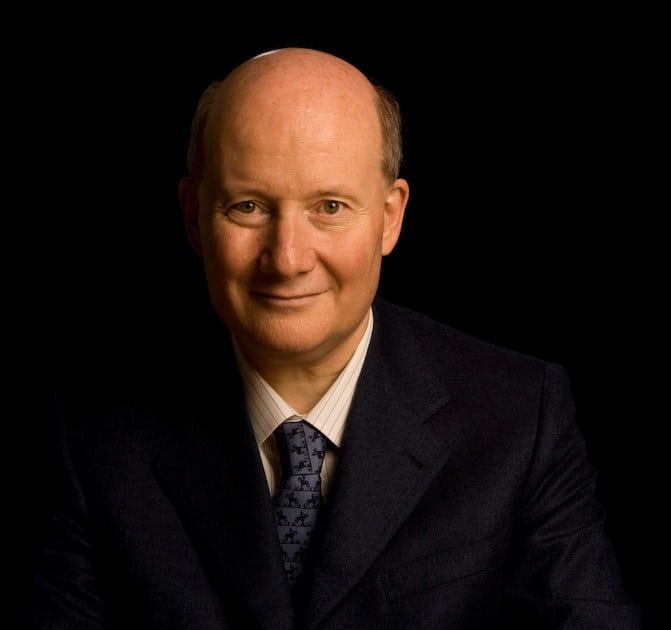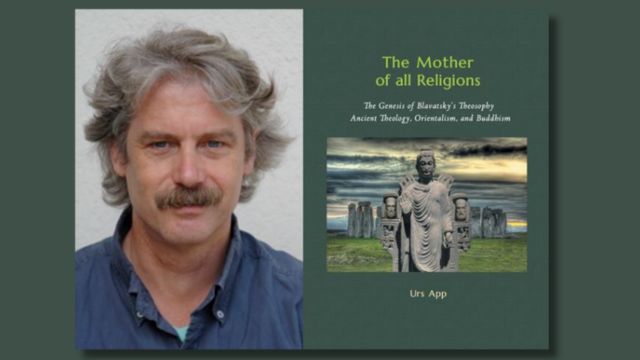The legend of Turin as the “city of the Devil” derives from nineteenth-century memories but also from a goliardic prank of the late 1960s.
Massimo Introvigne*
*Lecture in the City Council Chamber of Settimo Torinese (Turin), January 18, 2025.
Article 4 of 4. Read article 1, article 2, and article 3.

As we have seen in the previous articles in this series, Turin has had a significant presence of alternative spiritualities and even esotericism and occultism, which, however, in itself does not justify the myth of the “city of magic” par excellence. How and why did this myth arise?
To attempt an answer, Alice must step through the looking glass and immerse herself in the meta-reality that is the image of Wonderland Turin constructed in the popular imagination and fed by the media. It is not only about the tabloids. It would be interesting to erect a catalog of the articles that respectable Italian but also American, German and even Japanese media have devoted to Turin “city of the Devil,” “magic city,” “capital of the cults,” “apex of the satanic triangle” (the other two cities vary, from Lyon-Prague to London-San Francisco, but Turin remains). In 1986, “Der Spiegel” deemed it necessary—with the ever-present interviews with the usual characters, from the sorceress-for-hire to the occult painter—to devote four pages to the “passion for Satan” in Turin, wondering if the city was not the victim of a “collective satanic psychosis.” In 1990, the popular Japanese weekly “03” devoted no less than 12 pages to “Turin, the City of Holiness and Evil” with similar considerations.
The academic conference “Diábolos, Diálogos, Daímon,” held in Turin in the fall of 1988 and in which I also participated at the time, unleashed some media into the construction of a magic mirror that no longer had anything to do with the Turin reality it was supposed to reflect. It was also an occasion for the publication of valuable writings. In particular, the volume edited by sociologist Filippo Barbano “Diavolo, diavoli. Torino e altrove” (Bompiani, Milan 1988) constituted a first articulate reflection not so much on the reality but on the mirror. Barbano investigated the social construction of the “Torinomagic” myth of and its pale relationship with reality. Rising from the mirror to reality, in a series of interesting studies, another sociologist, Luigi Berzano, would later ask what role the “esoteric tertiary” actually plays in the Turin and Piedmont context.
Rather than summarize these studies, I would like to try to ask, at the conclusion of these reflections, what explains—assuming an explanation exists—the gap between the mirror and the reality. In other words: why did the nineteenth-century city of wonders (but with much less wonders today) become the “city of the Devil”? Why did a representation of Turin arise in the world—about “cults,” religions and magic—that has only a vague relation to what really happens in the city? Why did the “Spiegel”—but many have expressed themselves over the years in similar terms —at one point tell its readers about a “collective psychosis” and a general “passion for Satan” that not only is not there, but whose presence the ordinary citizen of Turin does not even suspect? I would like to follow, albeit very briefly, four possible lines of explanation, at least as a cue for further research.
First, some might argue that—if some journalistic amplification and distortion happens for any phenomenon—the mirror basically reflects a reality. If, when it comes to occult conventicles and magic, Turin comes into consideration more than Milan, Florence or Rome, it is precisely because satanic “sects” and magic are more present in Turin. The mirror problem, from this point of view, would be a false problem: it would rather be a question of explaining why the occult flourishes in the Piedmontese capital. This answer is partly false and partly true. Partly false because, as I mentioned earlier, there are data that make it possible to establish how the number of both religious and magical movements that can be included even in a broad area of “new religiosity” is greater at least in Milan and Rome than in Turin. If one compares, in particular, the number of magical groups, esoteric orders and specialized bookstores, Milan clearly precedes Turin in every respect. Yet the international press continues to talk about “magical Turin” and much less about a “magical Milan.”

The explanation of a “strong” analogy with reality, moreover, is partially true because if Turin is not today Italy’s capital of alternative spirituality and occultism, it was so in the 19th century during the period from 1848 (which established a new climate of religious freedom) to the somnambulists’ trial of 1890 and to 1899, when, with the first meetings in Milan of the Society of Psychical Studies funded by the chemical industrialist Achille Brioschi, the center of the research on spiritualism and “magnetic” phenomena moved to the Lombard capital. It was at this time—in the second half of the nineteenth century—that a certain fame was born of Turin, which then persisted by fatigue—and sometimes by revival, fueled by occasional episodes—in the twentieth century and to the present day.
We thus come to a second explanation of the mirror phenomenon, which is historical in nature. The fame of Turin as a magical city and the capital of alternative spiritualities was built by the concomitance of three causes we have already mentioned. The first—which explains the presence of new religions although it has nothing to do with magical phenomena—was the “Waldensian myth.” It attracted to Piedmont (at first to the Waldensian Valleys, but later also to Turin) all the new religious movements that had sprung up in English-speaking countries, from the Salvation Army to the Seventh-day Adventists, from the Mormons to the Jehovah’s Witnesses. The second element—operating more on the side of occultism—was the proximity not only geographically but culturally, with France and in particular Lyon, one of the most important centers (mythologies about the “triangles” aside) of esotericism first and Spiritism later.
The third and really decisive element was political, and refers to the conflict between the state and the Catholic Church at the time of the Risorgimento. It led the Savoy authorities—within certain limits—to tolerate, when not to favor, all forms of alternatives directed at weakening the monopoly of the dominant religion. Nineteenth-century Catholic polemic always pointed to the government, rightly or wrongly, as the protector when not the organizer of the propaganda of new religious forms, often labeled “Protestant” without further distinction.
But it was not just a matter of new Christian denominations. The greatest exponent of magnetism in Italy, Francesco Guidi, wrote in 1860: “Piedmont was in the last ten years the only part of Italy where there was a good climate for magnetism, which being, as we have said, a science of progress, indeed the best of progress, necessarily needs freedom. In Piedmont, in the shadow of free association and free press, granted by the constitutional Savoy Statute, it could be freely studied, experimented, and applied.”
Not only the magnetizers and spiritualists were grateful, but the spirits themselves. Almost all the spirits were anti-Catholic and favorable to the House of Savoy, whether they were “classical” spirits such as Dante or Martin Luther, or Garibaldi, Mazzini, or Cavour. All of the latter were ready to manifest themselves to Turin Spiritist circles in the years immediately following their deaths in order to defend from the afterlife the same political and anticlerical causes for which they had fought during their earthly lives.
These late phenomena came to consecrate a climate that had existed before. It clearly showed the very earthly reasons for a tolerance toward the new marvelous that was, in other Italian cities, unthinkable. Conversely, the Catholic Church easily attributed to the Devil and Satanism this “political” flourishing of alternative spiritualities in Turin, which in the vast majority were not occult in their character.
A third explanation, in confirmation of the fact that small causes can have major consequences, with regard specifically to Satanism and the legend of Turin “city of the Devil” is linked to the fact that Turin was the capital not of Satanists but of Goliardia. The Goliards, a university phenomenon that has all but disappeared today, liked to play very elaborate pranks. And much of the myth of the Devil in Turin stems precisely from a prank, which years ago I was the first, but not the only one, to reconstruct. The urban legend that forty thousand Satanists were present in Turin (in fact, they were less than two hundred) was created between 1968 and 1972 by a group of good-timers, members of the active Goliardia of the Turin university. They were led by Gianluigi Marianini, a well-known city “viveur” and former champion of the TV show “Lascia o raddoppia,” who managed to have the news—totally fantastic—published in the daily “Stampa Sera.”

As the writer himself, who had already told me the details, pointed out in an interview in 2004, the news—accompanied by magic triangles with Prague and Lyon or London and San Francisco and an entrance to Hell in Piazza Statuto, all false and all part of the prank—passed because a young journalist friend of the pranksters, Vittorio Messori, a future interviewer of Popes but then not yet converted to Catholicism, worked at “Stampa Sera.” As he himself recounted, Messori was pleased to take part in such a prank by amusing himself, “—not alone, but in cahoots with some colleague or some connoisseur or followers of the ring—by throwing supposed news or shooting figures that no one was able either to disprove or confirm.” After all, they “were meeting the so human need to wonder, to dream, to fantasize” and even constituted “an antidote to the obsessive, mournful political news in those years of terrorism.” The prank succeeded so well that there are still newspapers, even abroad, talking about the famous forty thousand Satanists in Turin.
Fourth, one should not forget the social insecurity associated with the great transformations, which manifested in Turin in the period of the Risorgimento and then again with the economic expansion and the great upheavals of the 1960s and 1970s, when not surprisingly the myth of the magical and satanic Turin was born (with the help of the pranksters). Social insecurity is not only the cause of the wonders, but is also the cause of the mirror. It does not only generate interest in magic, but also the fear of the magicians and the Satanists. The urban legends that amplify everything about Satanism (and sometimes also “cults” and occultists) are partly ridiculous, but sometimes also dangerous and generative of violence. They are, certainly, revealing of a deep malaise that runs through post-modern societies and that seeks secret enemies, elusive scapegoats on whom to vent fear of difference. These are neither positive nor harmless phenomena. If the exploration of wonderland can sometimes be fascinating, from the mirror that amplifies and deforms Alice must be helped out. Remaining too long in the mirror can be felt as intolerable, and can turn those trapped in the mirror into intolerant of all those whom they perceive as alien to their determination of rationality and whose influence they overestimate. Alice’s temptation, in this case, will be to break the mirror. And one needs not be superstitious to fear that seven years of trouble may indeed result from this break.

Massimo Introvigne (born June 14, 1955 in Rome) is an Italian sociologist of religions. He is the founder and managing director of the Center for Studies on New Religions (CESNUR), an international network of scholars who study new religious movements. Introvigne is the author of some 70 books and more than 100 articles in the field of sociology of religion. He was the main author of the Enciclopedia delle religioni in Italia (Encyclopedia of Religions in Italy). He is a member of the editorial board for the Interdisciplinary Journal of Research on Religion and of the executive board of University of California Press’ Nova Religio. From January 5 to December 31, 2011, he has served as the “Representative on combating racism, xenophobia and discrimination, with a special focus on discrimination against Christians and members of other religions” of the Organization for Security and Co-operation in Europe (OSCE). From 2012 to 2015 he served as chairperson of the Observatory of Religious Liberty, instituted by the Italian Ministry of Foreign Affairs in order to monitor problems of religious liberty on a worldwide scale.



